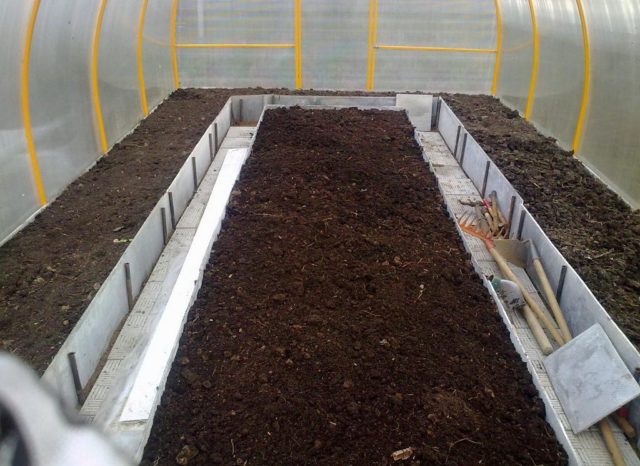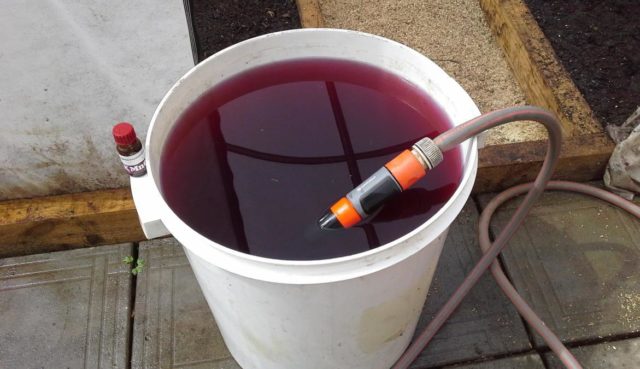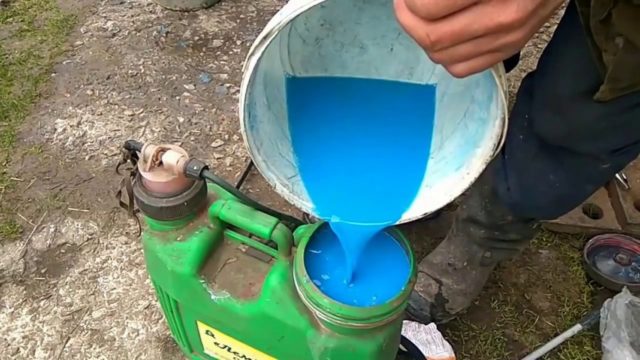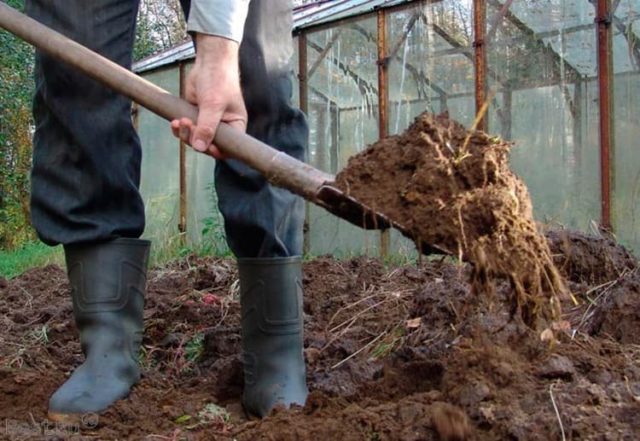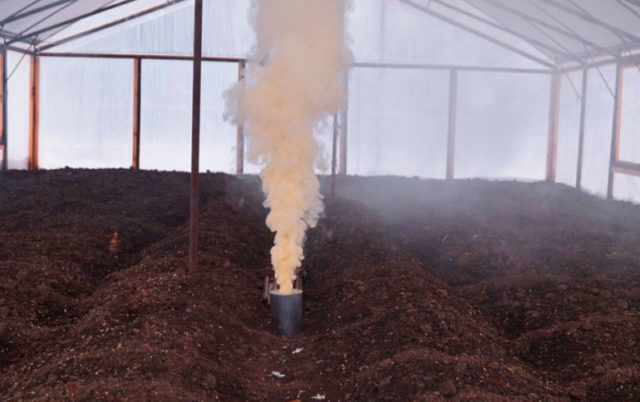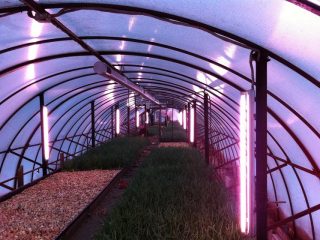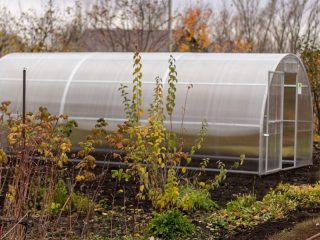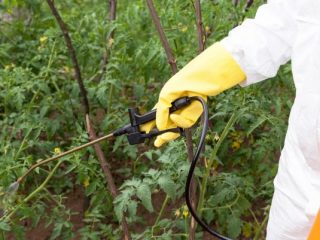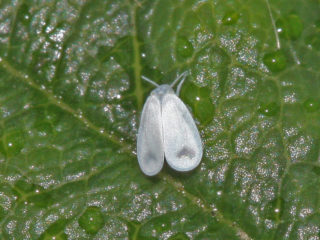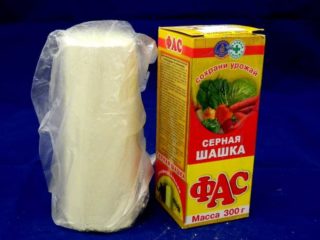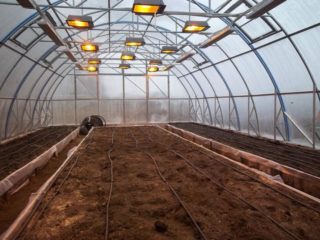Content
Tilling the soil in the greenhouse in the fall is an important part of pre-winter gardening. It allows you to significantly reduce the time spent on this work in the spring, and also performs a sanitary function. Autumn soil preparation is the key to a good future harvest.
How to properly prepare the soil in the greenhouse in the fall
During the year, the soil in the greenhouse is severely depleted. In addition, harmful substances, as well as pathogens of all kinds of diseases, accumulate in its upper layer. Therefore, once every 5 years, the land in the greenhouse must be completely changed, and annually in the fall, work should be carried out to sanitize and improve the quality of the upper fertile layer.
In autumn, soil preparation for a greenhouse (or in a greenhouse) consists of several stages:
- digging;
- disinfection;
- fertilizer.
Each of these activities is an important part of the complex of ongoing work.
Do I need to dig up the ground in the greenhouse in the fall
The ideal option is the annual complete replacement of the fruiting top layer with a thickness of 10-15 cm. However, not all gardeners have the opportunity to do this every fall. Therefore, it is imperative to dig up the soil in the greenhouse, choosing from it the roots of plants and larvae of insect pests. Since the beds will be spilled with boiling water or frozen out in the future, digging will allow the loose earth to gain the required temperature much faster.
How to disinfect the ground in a greenhouse in autumn
There are several ways to properly cultivate the land in the greenhouse in the fall and kill the larvae of insects and pathogens in the upper soil layer:
- chemical;
- thermal;
- biological;
- cryogenic.
For the chemical method of soil disinfection in the greenhouse in the fall, various substances and their aqueous solutions are used, which kill pests. The thermal method involves multiple treatment of the beds with hot water or drying them under the sun. The biological method consists in treating the soil with special preparations that inhibit pathogenic microflora.
The cryogenic method is the simplest. With this method, the greenhouse is left open throughout the winter. The beds not covered with snow freeze much more, this kills the pests hibernating in them.
How to cultivate the land in a greenhouse in autumn
To cultivate the land in the greenhouse in the fall, you can use boiling water, antibacterial drugs, as well as broad-spectrum fungicides. They can be used in combination.
Soil treatment with chemicals
The chemical method is used to treat greenhouses in autumn without replacing the soil. For this, various drugs and chemicals are used. The most commonly used preparation for cultivating the land in greenhouses is copper sulfate. It is quite effective against pathogens of various diseases, for example, scab, rot, coccomycosis, phytophthora and others.
A solution of copper sulfate is easy to prepare yourself. This will require 100 g of the substance and 10 liters of water.It is necessary to treat the topsoil with such a solution, as well as the walls of the greenhouse. It is necessary to prepare a solution of copper sulfate immediately before use, since it cannot be stored. It is also not recommended to use iron dishes, as this substance can enter into chemical reactions with metals.
To enhance the disinfecting effect, many gardeners use copper sulfate mixed with quicklime (Bordeaux liquid). It is a stronger and more effective drug. It can be purchased in a specialized store in the form of a dry mixture, or you can prepare a solution yourself by diluting 100 g of each of the components in 5 liters of water and then gently mixing the two liquids.
Soil heat treatment
Heat treatment of the soil is carried out using the sun and hot water. If by the time all work is completed, the sun is still bright enough, you can open the greenhouse and properly dry the soil under its rays. If the weather is already cold, you can use hot water. All the beds are poured into it at least three times, and then the soil is covered with plastic wrap to better keep the temperature.
Biologicals for soil disinfection in a greenhouse
Biologically active compounds very effectively rid the soil of harmful microflora, while maintaining and increasing the content of beneficial microorganisms in it. You can disinfect the soil in the greenhouse in the fall with the help of the following drugs:
- Baikal-M1;
- Emochki-Bokashi;
- Phytocide;
- Baktofit;
- Fitosporin;
- Trichodermin.
An additional positive point when using them is that they effectively decompose organic residues, enriching the soil with useful substances and trace elements. Therefore, soil treatment with biological products has no side effects.
How to fertilize the land in the greenhouse in autumn
As a rule, the composition of fertilizers for applying to the greenhouse soil in autumn depends on the type of plants that are to be grown in the greenhouse next year. The main components are usually rotted manure, compost, humus and wood ash.
After harvesting, many gardeners practice sowing siderates (white mustard, vetch). This measure improves the fertility and structure of the soil, as well as eliminates harmful microflora.
How to prepare the ground in a greenhouse for winter
Mandatory measures for preparing the land in the greenhouse in the fall include:
- Cleaning of plant residues.
- Replacing the upper fruiting layer or disinfecting it.
- Digging up the soil.
- Fertilization.
Since different crops grown under cover react differently to the composition of the soil and the fertilizers used, soil treatment and preparation for each type of plant is carried out taking into account these nuances.
Preparing the soil in the greenhouse for tomatoes in autumn
Tomatoes in our country are more often than other garden crops grown under the film. Preparing the soil in the greenhouse in the fall for tomatoes consists in arranging multi-layer beds. For this, the top soil layer of about 40 cm is removed. Then lay out the following components in layers:
- Finely chopped branches.
- Sawdust.
- Tops or compost.
- Peat or rotted manure.
- Dirt ground.
This layer cake will be an excellent base for growing tomatoes. And branches and sawdust will serve as an additional heat-insulating layer, eliminating freezing of the roots of seedlings in early spring.
Preparing the soil for cucumbers in the fall in the greenhouse
It is preferable to grow cucumbers in "warm" beds. In the fall, soil preparation in the greenhouse is carried out for them as follows. The top layer of soil is removed and mixed with humus in a 1: 1 ratio. In place of future beds, the following components are laid in layers:
- Coarsely chopped branches.
- Small branches.
- Chernozem.
- Manure (about 10 kg per 1 sq. M).
The latter need to pour the top layer from a mixture of turf soil with humus. It is undesirable to freeze such soil, therefore it is necessary to keep such beds under the snow in winter.
How to properly prepare the soil for peppers and eggplants
Peppers and eggplants are heat-loving plants, therefore it is better to grow them in "warm" beds. Preparing the land in the greenhouse in the fall for growing them is quite simple. The top layer of soil (about 30 cm) must be removed, then a layer of plant waste (grass, fallen leaves, tops) should be laid, a small layer of rotted manure should be poured above, and then a layer of a fertile species. During the winter, the biomass will gradually rot, due to which the soil temperature in the beds will always be elevated.
A few tips from professionals
Simultaneously with the disinfection of the soil in the fall, the entire structure is usually disinfected. The sulfur bombs used for this cannot be used in greenhouses with a metal frame, since the smoke from the sulfur bombs will cause severe corrosion of iron structures.
The siderates planted after harvesting do not have to be harvested. If they have grown high enough, they need to be mowed and left in the beds, and in the spring they just need to be embedded in the soil during digging.
In small buildings, processing can be done with potassium permanganate. To do this, you need to prepare its 2% solution, which is used to spill the dug up soil.
To make the greenhouse soil light and loose, river sand is added to it (about 1/6 part). This prevents washing out of the fertile layer.
If you use the method of freezing the soil, then you can cover the beds with snow at the end of winter or early spring. Fresh melt water will have a beneficial effect.
Conclusion
Tilling the soil in a greenhouse in autumn is a rather laborious, but necessary measure to avoid many problems for the next year. It will help get rid of pests, improve the quality of the soil, raise its fertility, thereby increasing the chances of a good future harvest. Do not neglect these works. Moreover, you can choose any time for them, because the climate in the greenhouse does not depend on the vagaries of the weather.
